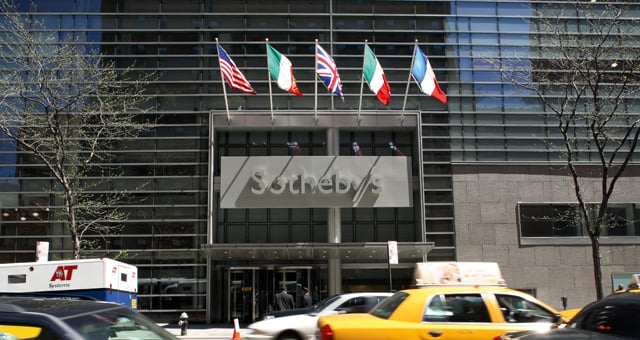

Moody’s Investors Service is taking a cautious view of the level of Sotheby’s debt ahead of the auction house’s ambitious hopes for the upcoming fall auction season.
In a report issued September 28 analyst Margaret Taylor, senior vice president of Moody’s corporate finance group noted that Sotheby’s has expanded its revolving line of credit twice, with the latest increase of $485 million occurring in June.
The revolving line of credit now tallies $1.335 billion, allowing the auction house the ability to borrow up to $1.035 billion for its finance segment.

Source: Yahoo Finance
Taylor said that while the borrowing activity “can drive further growth for its rapidly expanding finance segment,” it “also poses the risk of materially weakening its credit rating in the longer term.”
Taylor said Sotheby’s is “sacrificing its balance sheet to support its loan portfolio.”
Shortly after Sotheby’s recent announcement that it would auction the collection of its illustrious former chairman A. Alfred Taubman, SEC filings—which Sotheby’s is required to make since it is a publicly traded company—indicated that the auction house gave the Taubman estate a massive $500 million guarantee.
As part of that announcement, Sotheby’s said it would seek to mitigate the risk somewhat by entering into third party guarantee arrangements on some of those lots.
The wide-ranging collection of the Taubman estate comprises 500 items and includes objects ranging from antiquities to Impressionist and contemporary works. The $500 million overall estimate makes it the most expensive private collection to ever be offered auction. The most valuable works include paintings by Amedeo Modigliani, Pablo Picasso, Willem de Kooning, and Mark Rothko.
Shares of Sotheby’s stock, which trades under the symbol “BID” on the New York Stock Exchange, have been trending down in the last week, dropping from about $35 a share on September 19 to above $32 a share on September 28.





